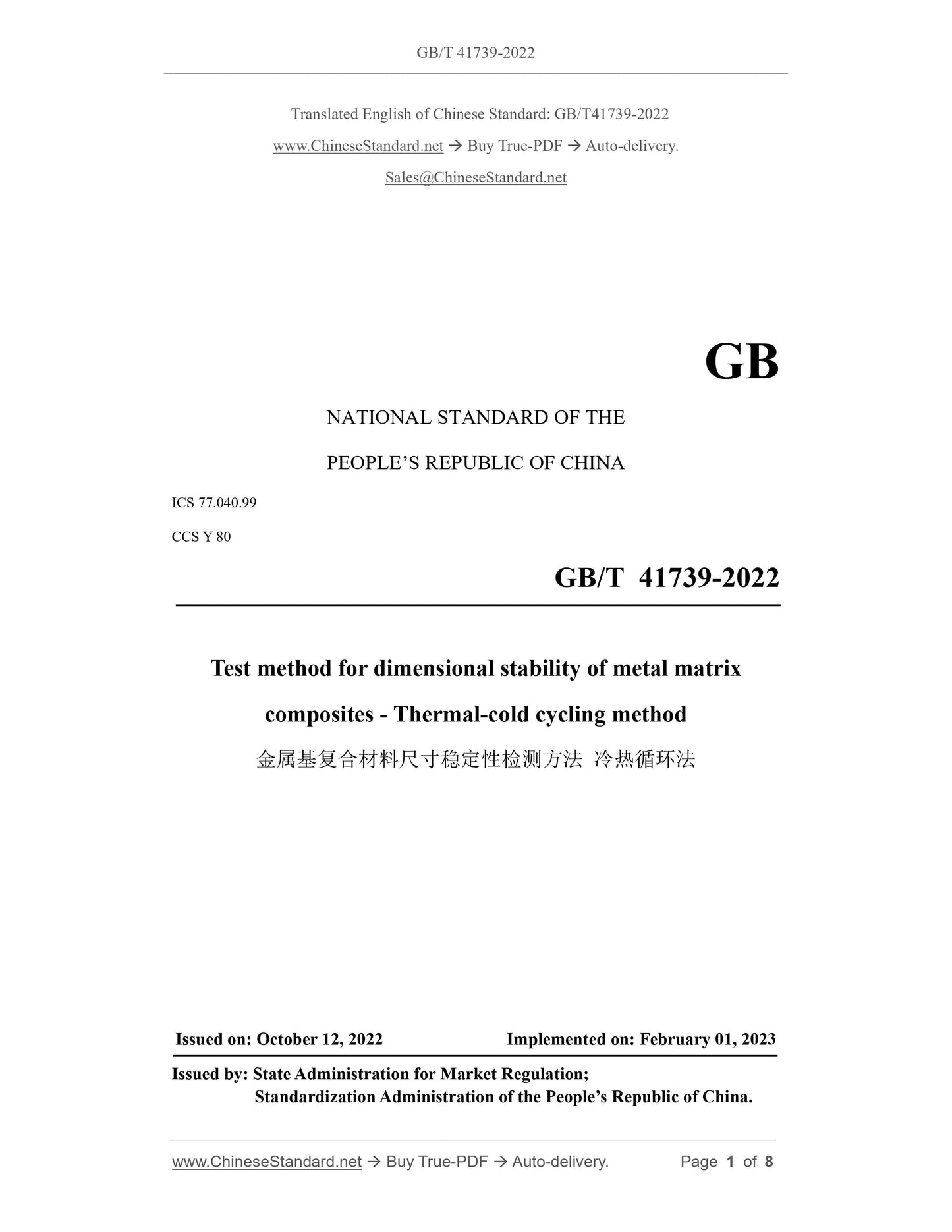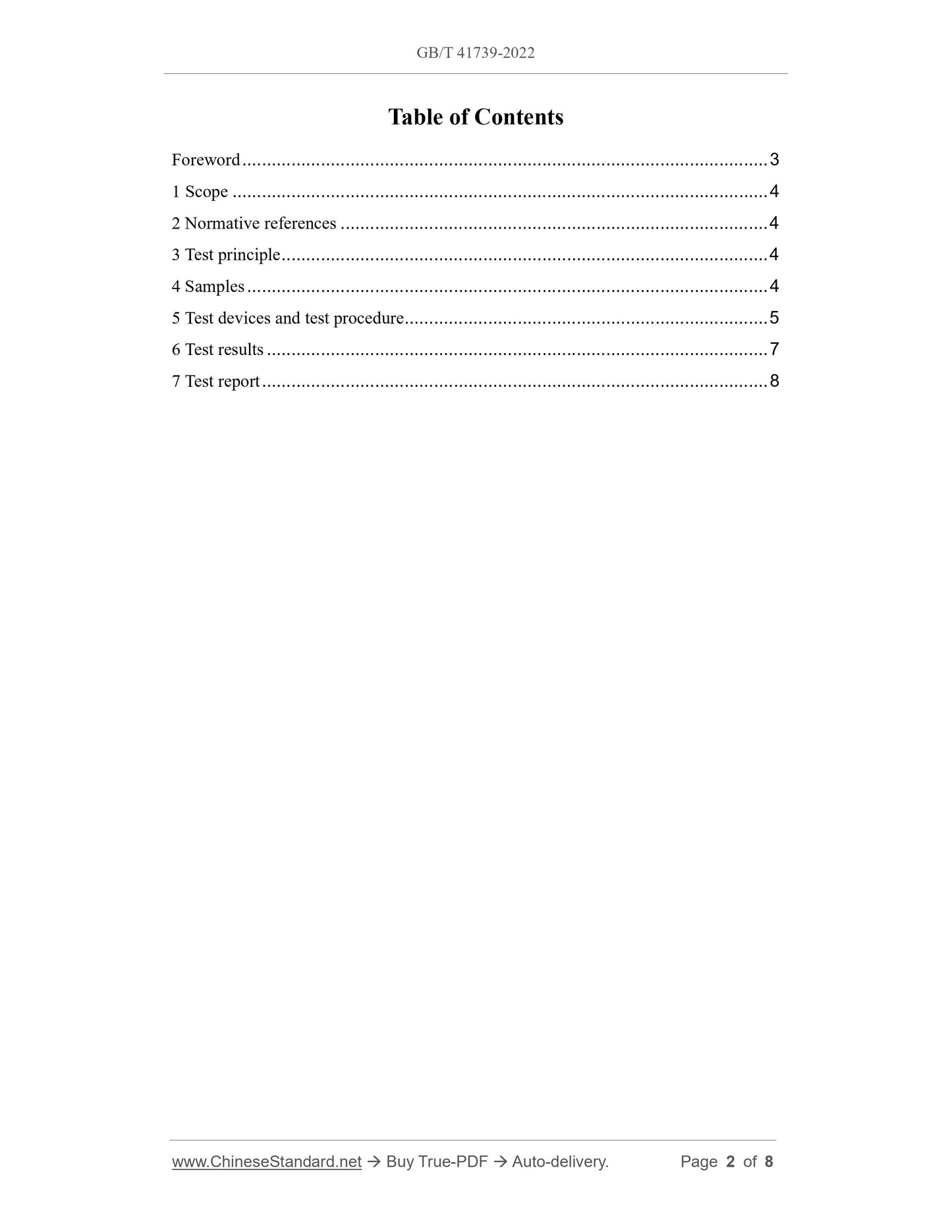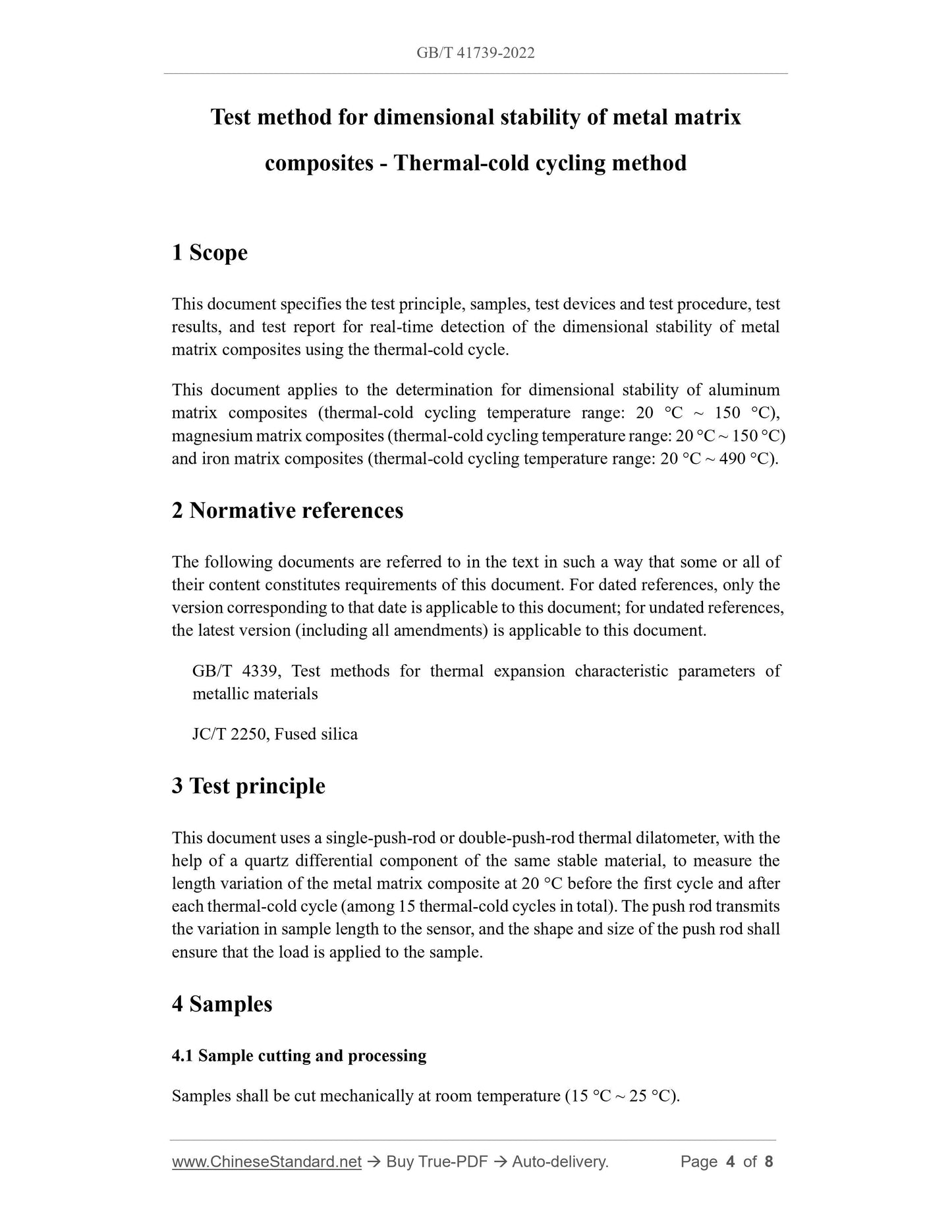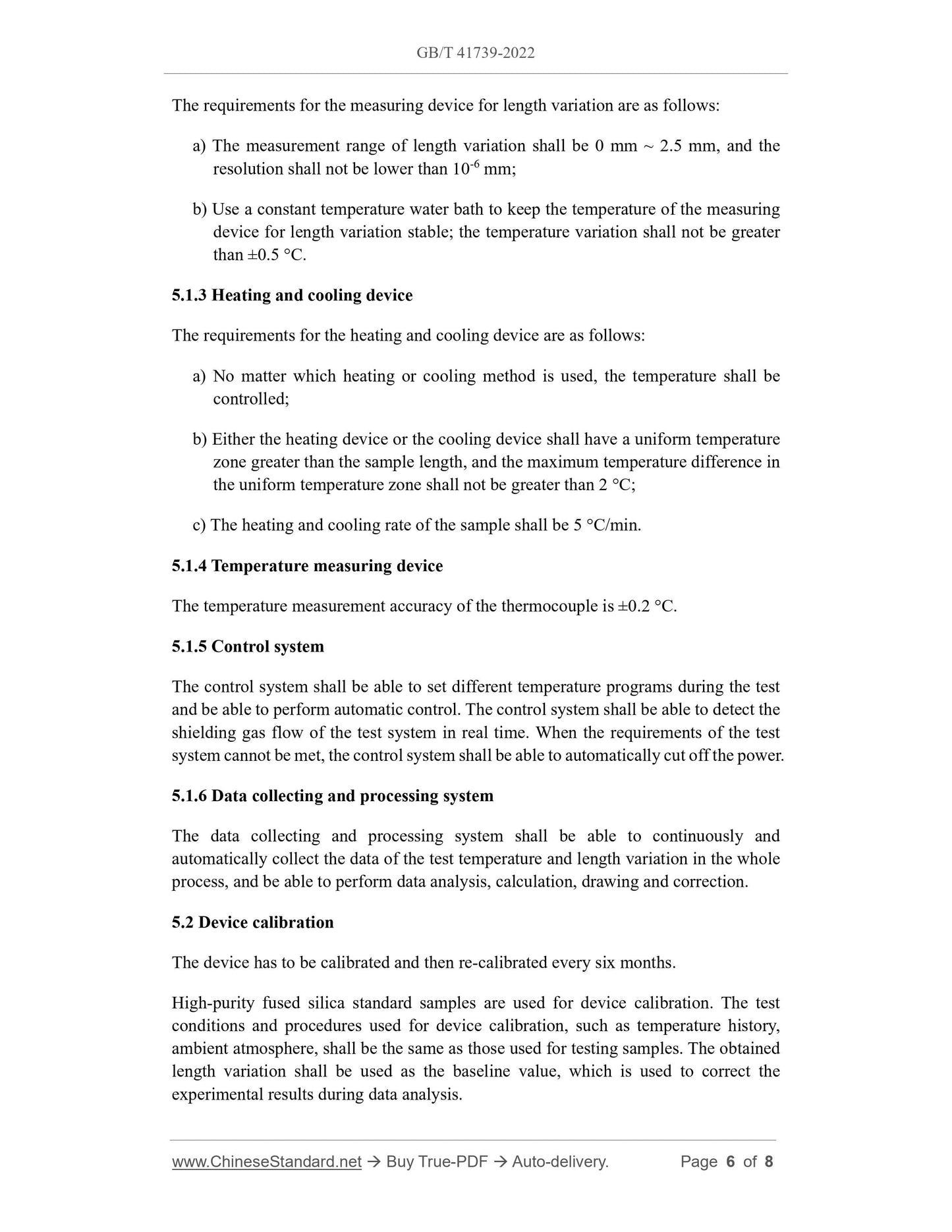1
/
of
4
www.ChineseStandard.us -- Field Test Asia Pte. Ltd.
GB/T 41739-2022 English PDF (GB/T41739-2022)
GB/T 41739-2022 English PDF (GB/T41739-2022)
Regular price
$170.00
Regular price
Sale price
$170.00
Unit price
/
per
Shipping calculated at checkout.
Couldn't load pickup availability
GB/T 41739-2022: Test method for dimensional stability of metal matrix composites - Thermal-cold cycling method
Delivery: 9 seconds. Download (and Email) true-PDF + Invoice.Get Quotation: Click GB/T 41739-2022 (Self-service in 1-minute)
Newer / historical versions: GB/T 41739-2022
Preview True-PDF
Scope
This document specifies the test principle, samples, test devices and test procedure, testresults, and test report for real-time detection of the dimensional stability of metal
matrix composites using the thermal-cold cycle.
This document applies to the determination for dimensional stability of aluminum
matrix composites (thermal-cold cycling temperature range: 20 °C ~ 150 °C),
magnesium matrix composites (thermal-cold cycling temperature range: 20 °C ~ 150 °C)
and iron matrix composites (thermal-cold cycling temperature range: 20 °C ~ 490 °C).
Basic Data
| Standard ID | GB/T 41739-2022 (GB/T41739-2022) |
| Description (Translated English) | Test method for dimensional stability of metal matrix composites - Thermal-cold cycling method |
| Sector / Industry | National Standard (Recommended) |
| Classification of Chinese Standard | Y80 |
| Classification of International Standard | 77.040.99 |
| Word Count Estimation | 7,738 |
| Date of Issue | 2022-10-12 |
| Date of Implementation | 2023-02-01 |
| Issuing agency(ies) | State Administration for Market Regulation, China National Standardization Administration |
Share







